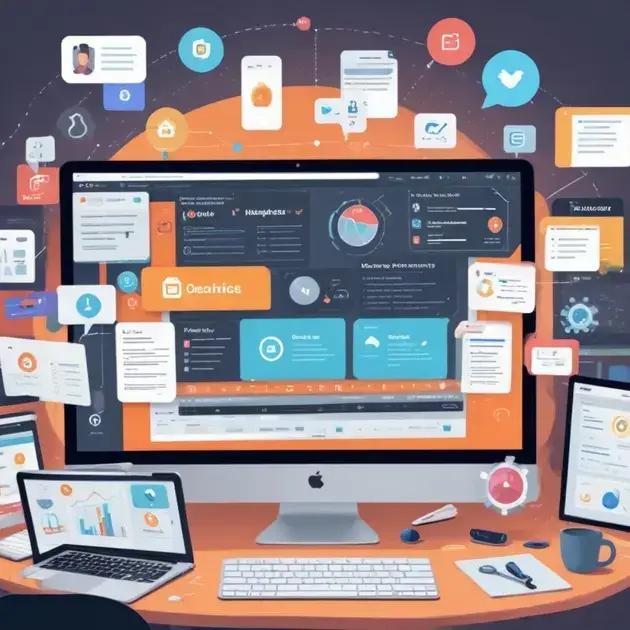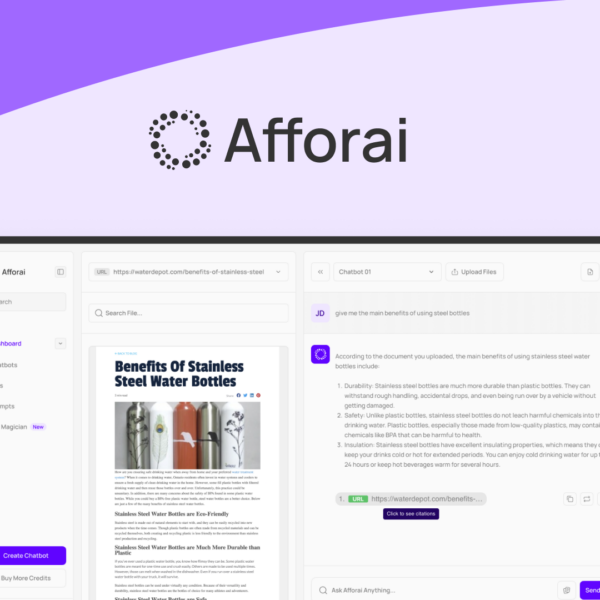Understanding Who Makes Purchasing Decisions
Understanding who makes purchasing decisions is crucial in B2B tech marketing. Typically, purchasing decisions are not made by a single individual. Instead, they involve a group of stakeholders known as the decision-making unit (DMU). Knowing who these stakeholders are can greatly influence your marketing strategies.
Key Roles in the Purchasing Process
Often, several key roles are involved in the buying process: Influencers, Gatekeepers, Users, Decision Makers, and Purchasers. Here’s what these roles typically entail:
- Influencers: These individuals affect the purchasing decision by sharing research or leveraging their expertise. They help shape perceptions.
- Gatekeepers: Gatekeepers control access to the decision-makers. They filter the information that decision-makers receive.
- Users: Users are the people who will use the product or service. Their feedback can significantly impact the final decision.
- Decision Makers: These are the ultimate authorities who approve the purchase. They focus on overall strategy and budget.
- Purchasers: Purchasers handle the transaction. They are responsible for the final agreement and payment.
Identifying Your Audience
To effectively communicate with prospective buyers, you need to identify who is involved in the decision-making process. Start by asking the right questions:
- Who is affected by the software or service?
- Who approves the budget for the purchase?
- What information do they seek before making a decision?
Gathering insights through interviews or surveys can shed light on the structure of the DMU in your target organizations. This understanding allows you to tailor your marketing content to address each group’s specific needs.
Leveraging Relationships
Strong relationships play a vital role in B2B marketing. Building rapport with influencers and gatekeepers can open doors to decision-makers. Consider:
- Creating informative content that aligns with the interests of these roles.
- Engaging in meaningful conversations that position your brand as a trusted advisor.
By knowing the structure of the purchasing decision, you can align your messaging with the needs and preferences of all stakeholders involved. This approach can enhance your chances of success.
How Software Buyers Discover Solutions

In today’s digital landscape, understanding how software buyers discover solutions is essential for effective B2B tech marketing. With so many options available, buyers have changed their habits and rely on various channels to find what they need.
Common Channels for Software Discovery
Software buyers typically use several platforms to research and compare products. Here are some popular channels:
- Search Engines: Most buyers start their search on Google or Bing. Keywords play a crucial role in directing prospects to your content.
- Referral Networks: Recommendations from peers or trusted sources are highly influential. Buyers value opinions from other business leaders.
- Social Media: Platforms like LinkedIn and Twitter are used to connect with vendors, read reviews, and follow industry trends.
- Industry Events: Conferences, trade shows, and webinars allow buyers to learn about new solutions and interact with vendors face-to-face.
- Online Reviews and Comparison Sites: Websites like G2 and Capterra provide insights and ratings that can sway buyer decisions heavily.
The Importance of Content Marketing
Content marketing is crucial as buyers rely on quality information to guide their decisions. Consider these formats for your content strategy:
- Blog Posts: Write about common challenges and solutions in the industry to attract interested buyers.
- Case Studies: Showcase success stories to demonstrate how your software has positively impacted other businesses.
- Webinars: Host sessions that educate potential buyers about your product’s benefits and answer their questions live.
SEO and Its Role in Discovery
Search Engine Optimization (SEO) helps ensure your content is found by potential buyers. Incorporate these best practices:
- Use the right keywords related to your software solutions in your content.
- Optimize meta descriptions and titles to encourage click-throughs from search results.
- Focus on the user experience on your website, making it easy for visitors to navigate and find information.
By aligning your marketing strategies with how software buyers explore solutions, you increase your chances of reaching them effectively. Providing valuable and accessible content will lead them to choose your software over competitors.
Effective Marketing Tactics for Today’s Buyers
To effectively reach today’s software buyers, B2B marketing tactics must evolve. Today’s buyers are informed and expect a seamless, engaging experience. Here are some effective marketing tactics to implement.
Personalized Content Marketing
Personalization is key to engaging potential buyers. Here are ways to tailor your content:
- Segment Your Audience: Divide your potential customers into segments based on their needs and preferences. This allows you to create targeted messages.
- Use Dynamic Content: Implement content on your website that changes based on user behavior and preferences, providing a tailored experience for each visitor.
- Email Campaigns: Send personalized emails that address specific pain points and offer solutions tailored to each recipient’s needs.
Leveraging Social Proof
Buyers often rely on social proof to make decisions. Highlighting testimonials and reviews can be powerful. Consider these tactics:
- Customer Testimonials: Share success stories from past clients to build trust and credibility.
- Case Studies: Develop detailed case studies that showcase how your product solved specific challenges for other businesses.
- Online Reviews: Encourage happy customers to leave positive reviews on platforms like G2 or Capterra to enhance your online reputation.
Utilizing Influencer Marketing
Collaborating with industry influencers can significantly boost your visibility. To leverage influencer marketing:
- Identify Key Influencers: Research and reach out to influencers in your niche who have a strong following and a good reputation.
- Create Collaborative Content: Work with influencers to produce content that resonates with their audience while highlighting your product’s benefits.
- Engage on Social Media: Regularly interact with influencers and their followers to establish authentic relationships.
Utilizing Interactive Content
Interactive content keeps potential buyers engaged and can lead to higher conversion rates. Consider:
- Quizzes and Assessments: Create quizzes that help buyers evaluate their needs and align them with your solution.
- Interactive Demos: Provide interactive product demonstrations that allow potential buyers to see the product in action.
- Webinars: Host engaging webinars that allow for live interactions, answer questions in real-time, and showcase your expertise.
By implementing these effective marketing tactics, you can create a compelling environment that attracts and retains today’s software buyers. Remember, the goal is to provide value while clearly demonstrating how your solution can meet their specific needs.
Tools to Engage B2B Software Buyers

Engaging B2B software buyers requires the right tools and strategies. With the right resources, you can create meaningful interactions that lead to conversions. Below are essential tools to consider when aiming to connect with B2B software buyers.
Customer Relationship Management (CRM) Tools
CRM tools are vital for managing interactions with potential buyers. They help track leads, manage customer relationships, and automate communication. Popular CRM tools include:
- Salesforce: A leading CRM that offers detailed tracking of customer interactions and streamlined sales processes.
- HubSpot: Provides integrated tools for marketing, sales, and customer service, making it easier to manage your pipeline.
- Pipedrive: This sales-focused CRM helps in visualizing sales processes and facilitating engagement with leads.
Email Marketing Platforms
Email remains one of the best ways to engage B2B buyers. Using email marketing platforms allows for targeted and personalized communication. Consider:
- Mailchimp: An easy-to-use platform that allows for automated email campaigns and audience segmentation.
- Constant Contact: Offers email templates and tracking features to enhance engagement rates with targeted emails.
- ActiveCampaign: Combines email marketing with automation tools to nurture leads and maintain customer relationships.
Content Management Systems (CMS)
A robust CMS allows you to create and manage content that can attract and engage software buyers. Good options include:
- WordPress: Highly customizable and offers numerous plugins to optimize content for SEO and user engagement.
- Drupal: A powerful CMS ideal for complex sites and offers extensive flexibility in content management.
- Squarespace: User-friendly with beautiful templates that make it easy to create visually appealing content.
Webinar and Video Marketing Tools
Webinars and videos are effective in demonstrating product value. Here are tools that can help:
- Zoom: Widely used for hosting webinars and virtual meetings, allowing for real-time interaction with buyers.
- GoToWebinar: Offers features for easy webinar setups and provides analytics to assess engagement.
- Vimeo: An excellent platform for hosting and sharing professional-looking videos that highlight product features.
Analytics and Tracking Tools
Understanding how buyers interact with your content is crucial. Utilize analytics tools such as:
- Google Analytics: Provides insights into website performance and user behavior, crucial for adjusting marketing strategies.
- Hotjar: Offers heatmaps and visitor recordings to observe how users navigate your site.
- LinkedIn Analytics: Helps track engagement on your professional content, especially useful for B2B marketing.
Using these tools effectively can help you build strong connections with B2B software buyers. The right combination of technology and strategy will enhance your engagement and conversion rates.
Changing Spending Patterns of Software Buyers in 2021
In 2021, software buyers showed noticeable shifts in their spending patterns. Understanding these changes is vital for marketers looking to tailor their strategies. Several trends have emerged that reflect how buyers now allocate their budgets.
Increased Focus on Value
Today’s buyers are more focused on the value of a software solution rather than just the price. Here are key points about this trend:
- Cost-Benefit Analysis: Buyers conduct thorough analyses to weigh the benefits of a software solution against its costs.
- ROI Emphasis: Companies are looking for clear demonstrations of return on investment (ROI) before making purchases.
- Long-Term Savings: Buyers prefer solutions that may have higher upfront costs but promise lower long-term operating expenses.
Shift to Subscription Models
A significant change in spending patterns has been the shift to subscription-based software models. Many buyers favor these for several reasons:
- Lower Initial Costs: Subscription pricing reduces the need for large upfront capital outlays, making it easier to adopt new technologies.
- Flexibility: Subscription models allow businesses to scale their services up or down as needed, accommodating changes in demand.
- Access to Latest Features: Regular updates and new features included in subscriptions keep software current without additional costs.
Increased Investment in Security
With growing concerns over cyber threats, buyers are directing more spending toward security features. Important factors include:
- Data Protection: Software that offers robust data security and compliance features is highly sought after.
- Risk Management: Investing in security software is seen as essential to protect company assets and reputation.
- Employee Training: Companies are also spending on training employees to properly use software that enhances data security.
Demand for Integration Capabilities
As organizations adopt multiple software solutions, the demand for integration has grown. Key points are:
- Smooth Workflows: Buyers prefer software that can easily integrate with existing tools to streamline processes.
- Reduced Silos: Integrated solutions help prevent data silos within organizations, improving communication and teamwork.
- API Availability: The presence of APIs and integration capabilities is becoming a significant factor in buying decisions.
Conclusion on Budget Adjustments
Software buyers are making clear budget adjustments based on the need for flexible, secure, and valuable solutions. As these trends continue to evolve, understanding them will help marketers adapt their strategies to meet buyer expectations effectively.




